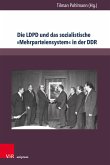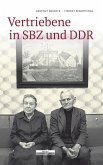The stability of political order during the Ulbricht era was predominantly based on the skilful way the Socialist Unity Party (SED) linked their ideological work with organisational structures and personnel policies. Ironically, the long lines and break after the epochal caesura of 1945 proved, at the district level, to be stabilising. This thesis is represented by Tilman Pohlmann in his study on the first secretaries of the SED's district head offices. They personified and organised the state socialist ruling system within the lower ranks of the GDR society and implemented the dictatorial demands of the party leadership into local political practice. For the first time ever, the generational profile and the structural internal order of the SED are now being examined integrally at the district level from an experiential- and institutional-historical perspective.
Dieser Download kann aus rechtlichen Gründen nur mit Rechnungsadresse in A, B, BG, CY, CZ, D, DK, EW, E, FIN, F, GR, H, IRL, I, LT, L, LR, M, NL, PL, P, R, S, SLO, SK ausgeliefert werden.









